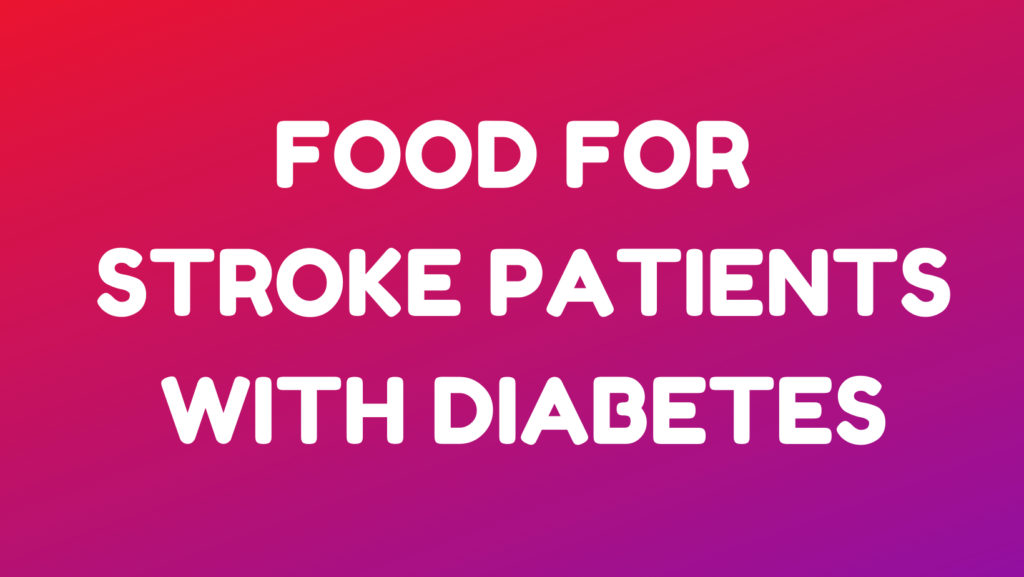Best Food for Stroke Patients with Diabetes
Healthful Vitality | 10/14/2021 | By NP Contributor | Food for Stroke Patients with Diabetes.

People living with diabetes are at much greater risk of stroke. Studies show that diabetes increases the risk by 1.5 times. Those living with diabetes also have worse outcomes, slower recovery.
Certain individuals are at greater risk of stroke when living with diabetes, like those above the age of 55. People with a family history of stroke, obesity, high cholesterol level, physically less active. Although age or genetics cannot be modified, one may still considerably alter stroke outcomes by altering lifestyle.
A higher risk of stroke in diabetes is related to its impact on blood vessels. Diabetes causes small and large blood vessels to become stiff, and there is an increased risk of them getting blocked. Therefore, there is no doubt that after diabetes, individuals need to control blood sugar more strictly.
Dietary challenges in stroke patients
After stroke getting nutrients may become more challenging. One may need to cut down on carbs, fats and yet maintain an adequate intake of micronutrients. It may be a good idea to consult a dietician for a proper diet plan. Healthy eating can not only help improve health, but it may also cut down the risk of another stroke.
However, those who had a stroke may have a problem using hand, difficulty in eating and drinking, and there might be changes in appetite and swallowing problems. Many of these conditions would need prolonged treatment, and a person may need to learn to live with these limitations.
Healthy eating for stroke patients with diabetes
After a stroke, it is essential to get a good number of nutrients and ensure that it does not cause an elevation in blood sugar levels.
What to eat:
- Include lots of vegetables of different colors in the diet, as they are rich in polyphenols, flavonoids, vitamins, and other antioxidants, which may boost healing processes.
- Include various nuts and seeds in diets as they are an excellent source of omega-3 fatty acids.
- Increase intake of beans and legumes, as they are rich in dietary fiber, which may help prevent gastrointestinal motility disorders, improve vascular health.
- Good sources of proteins could be lean meat, fish, tofu, eggs, nuts, legumes.
- Consume low-fat dairy products. Milk products are quite good for health with numerous healing properties.
- Drink plenty of water.
What to avoid:
- Avoid foods high in saturated fats like processed meats, fried foods, chips, biscuits.
- Avoid food that may contain trans-fats like margarine. Also, avoid palm oil, coconut oil.
- Limit salt intake. Pay special attention to foods that may have high salt content.
- Strictly control sugar intake, and thus sugary drinks are a big no.
Healthy lifestyle after stroke
A healthy diet rich in micronutrients is indeed vital when recovering from a stroke. However, studies show that equally critical is to start exercising. Studies show that exercising may considerably accelerate recovery, reduce the number of days when a person feels not healthy, and considerably improve the quality of life.
Recovery from stroke is complex but still possible. Loss of some body functions is due to the loss of brain cells. However, the brain has excellent regeneration capacity, and it can also distribute the load to other parts of the brain. Healthy eating along with exercise may considerably fasten recovery.
Related: What is Healthy Food?
